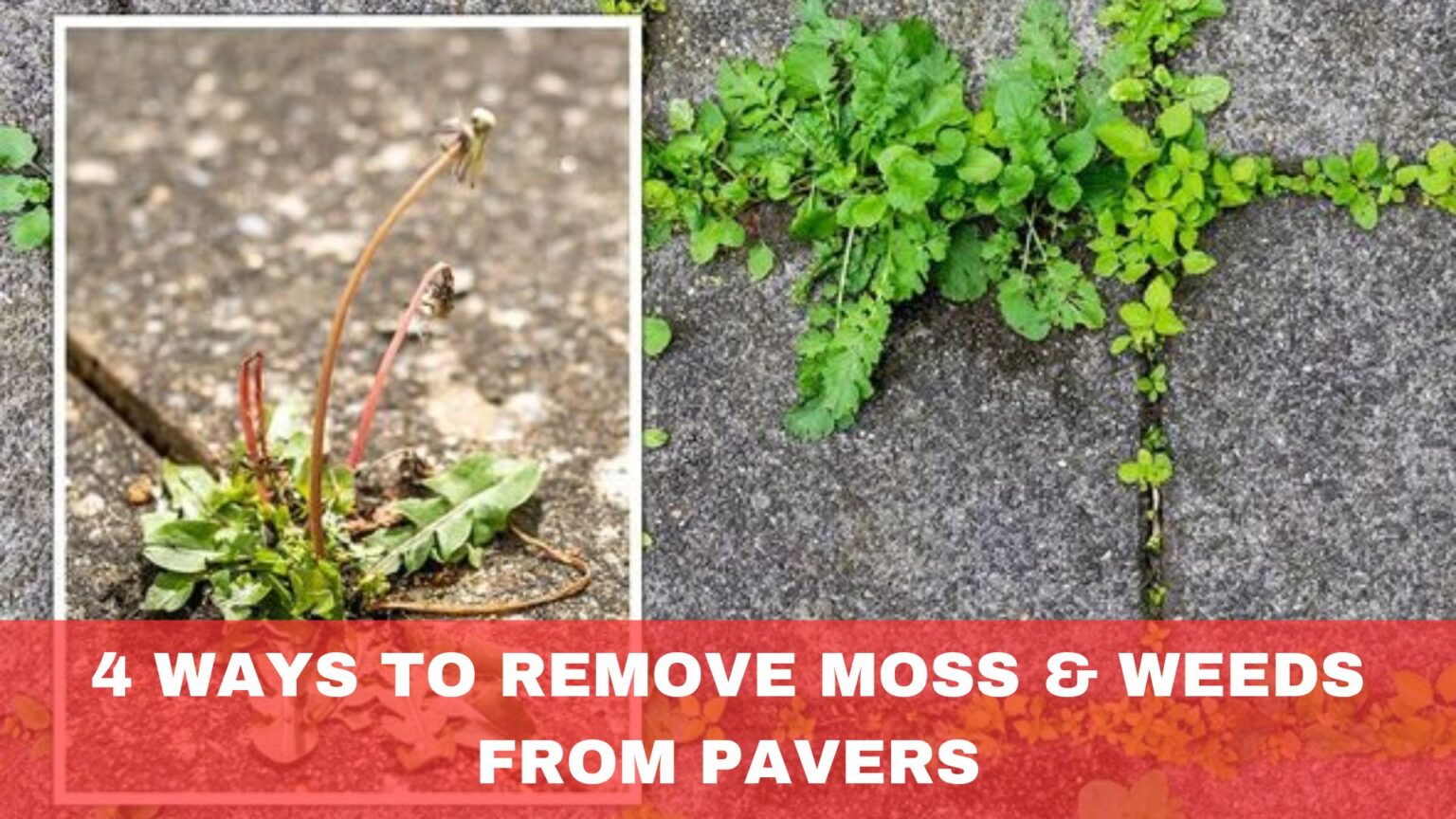
4 Ways to Remove Moss & Weeds from Pavers
Struggling with unsightly moss and weeds overtaking your pavers?
These invaders not only ruin your paver’s appearance but can also cause damage and create a slippery, unsafe surface. Left unchecked, they can lead to costly repairs and constant maintenance headaches.
Discover 4 practical ways to remove moss and weeds from your pavers, ensuring a clean, attractive, and safe outdoor space. Say goodbye to unwanted growth and hello to beautiful, hassle-free pavers.
Method 1: Manual Removal
Manual removal of moss and weeds from pavers is effective and chemical-free, though labour-intensive. Essential tools include garden gloves, a weeder or hand fork, a stiff-bristled brush, and a bucket or trash bag.
Start by clearing loose debris and putting on gloves. Use the weeder to loosen soil around weeds, then pull them out, ensuring you remove the roots to prevent regrowth. Place the weeds in a bucket. For moss, dip the brush in water and scrub vigorously. Rinse the area and sweep up the debris.
This cost-effective method provides immediate results without chemicals, making it eco-friendly. However, it is labour-intensive, time-consuming, and offers only a temporary solution, as moss and weeds can regrow if conditions remain favourable.
Method 2: Chemical Treatments
Chemical treatments are an efficient method of removing moss and weeds from pavers. Options include herbicides specifically for weeds, moss killers, and combination products that handle both issues simultaneously.
These treatments are known for their effectiveness and long-lasting results, though they necessitate careful handling.
Read the product label for detailed instructions and safety measures. It’s crucial to wear protective clothing, gloves, and goggles during application. After clearing the area of debris and ensuring the pavers are dry, prepare the chemical solution as directed.
A garden sprayer helps distribute the solution evenly over the moss and weeds. Allow the chemical to take effect, usually within a few hours to several days. Once practical, manually remove the dead moss and weeds and scrub off any remaining residues with a stiff-bristled brush.
Chemical treatments’ benefits include quick results and reduced physical effort compared to manual removal. Nevertheless, they can impact the environment and require careful handling to avoid health risks. Moreover, they can be more costly than manual methods.
Chemical treatments are ideal for large areas or stubborn growths, but they must be used responsibly to minimise environmental and health risks.
Method 3: Pressure Washing
Pressure washing presents a robust solution for eliminating moss and weeds from pavers. Utilising high-pressure water, this method effectively dislodges and washes away dirt, grime, moss, and weeds from the pavers’ surface. It is especially beneficial for large areas or heavily soiled surfaces.
When selecting a pressure washer, it’s crucial to choose wisely to prevent damaging the pavers. Consider factors such as PSI rating and nozzle tip, ensuring they suit the task. A pressure washer with a suitable PSI rating and a wide spray angle nozzle tip can prevent concentrated pressure and potential damage.
For effective pressure washing, follow these steps: prepare the pressure washer, test it on a small area to gauge its impact, and maintain a consistent distance from the pavers while using smooth, sweeping motions.
Applying a mild detergent or paver cleaner can also help tackle stubborn stains. After pressure washing, thoroughly rinse the pavers and allow them to dry before proceeding with further treatment.
Despite its benefits, pressure washing requires proper technique to avoid damaging the pavers. High-pressure water can potentially harm delicate or improperly installed pavers and consume significant water.
Method 4: Joint Stabilizing Sand
Joint stabilising sand emerges as a specialised solution for preventing weed and moss growth between pavers in paving maintenance. The key lies within its composition: polymers.
Once activated with water, these compounds bind the sand particles, fashioning a robust, impermeable barrier within the joints. To apply this solution effectively, one must ensure the foundation: clean, dry pavers.
Then, with precision, distribute the sand evenly, sweeping it into the joints for complete coverage. A gentle misting with water triggers the polymer activation process.
Yes, proper curing demands an upfront investment, both financially and in time. However, the results are substantial: weed and moss growth prevention and augmented stability render joint stabilising sand an indispensable asset for the long-term maintenance of paved surfaces.
Preventative Measures
Preventative measures are crucial in minimising moss and weed growth between pavers. By implementing proactive strategies, you can address potential issues before they escalate, reducing the need for extensive cleaning and maintenance.
- Regular Inspection and Cleaning: Inspecting your paved surfaces allows you to identify early moss and weed growth signs. Address any small patches promptly to prevent them from spreading. Additionally, regular cleaning removes debris and organic matter that can serve as a breeding ground for moss and weeds.
- Proper Drainage: Ensure that your paved areas have adequate drainage to prevent water from pooling on the surface. Standing water creates a favourable environment for moss and weed growth. Consider installing drainage systems or adjusting the area’s slope to facilitate proper water runoff.
- Sealing Pavers: Applying a sealant to your pavers can help inhibit the growth of moss and weeds by creating a protective barrier. Sealants also enhance the durability and appearance of the pavers, making them easier to clean and maintain.
- Use of Natural Remedies: Some natural remedies, such as vinegar or baking soda solutions, can effectively kill moss and weeds without harsh chemicals. However, exercise caution when using these remedies to avoid damaging surrounding vegetation.
- Regular Maintenance Schedule: Establishing a regular maintenance schedule for your paved surfaces ensures that preventative measures are consistently implemented. Schedule routine inspections, cleaning sessions, and any necessary repairs to keep your pavers in optimal condition throughout the year.
Conclusion
Effectively removing moss and weeds from your pavers enhances the appearance of your outdoor space and prolongs the life of your paving. Choose the method that best suits your needs and act promptly. Ready to transform your patio? Explore our expert tips on maintaining pristine pavers for years to come.
More To Explore

Stone Accents: Adding Charm to Modern Interiors with Natural Stone
Modern interiors seek a balance of style, durability, and uniqueness. Natural stone accents are a game-changer, adding timeless elegance and character to any space. As

Natural Stone Features That Will Transform Your Living Room
Natural stone elevates any living room with elegance, texture, and timeless appeal. Its versatility allows it to enhance both modern and traditional spaces. From stone


